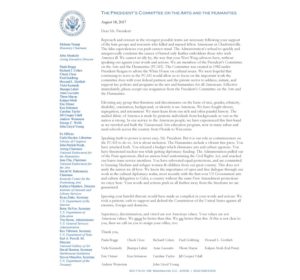From Identity Politics to Academic Masturbation
How did we arrive at this moment where university learning means parroting incoherent political rhetoric? Paolo Nicolello / Unsplash
Paolo Nicolello / Unsplash
Last fall, Alison Phipps, professor of gender studies at the University of Sussex in the United Kingdom, tweeted: “So my students built Lego sculptures to represent intersectionality and they were [emojis “100”, fist, party, purple heart].” Included in the tweet were three images of her students’ work:
So my students built Lego sculptures to represent intersectionality and they were ???? pic.twitter.com/ojW8yZ0UiL
— Alison Phipps is between strikes (@alisonphipps) October 17, 2017
In response, Phipps received over 1,500 tweets, almost all critical. Some answered with earnest questions about her method, but mostly there were critiques over her not knowing the difference between Lego and Duplo blocks. Others called out what they viewed as the hokum of her pedagogy, and many more protested being blocked for asking Phipps reasonable questions which she did not—or could not—answer. Scrolling through the Twitter feed from my mobile, I read numerous responses that expressed genuine disbelief and confusion with this assignment, which many found as ludicrous as Phipps’ inability to defend her methodology, further serving as proof that nothing substantial was being taught.
Given that intersectionality is a theory rooted in jurisprudence and black feminism, people queried how this exercise addressed anything that Kimberlé Crenshaw elaborates in her work. Many accused Phipps of engaging in the indoctrination of nonsensical ideas, while others pointed to the lack of integrity of such teaching methods and empty rhetoric. And several more critiqued the squandering of students’ financial investment in higher education, which would further disempower them from entering the job market, leaving them with a surplus of debt and excess of snowflakes. Overwhelmingly, the tweets questioned if anything whatsoever was being taught or learned.
Unable to address the criticism, Phipps dishonestly spun a false narrative, claiming her detractors were of the “alt-right” variety when in fact the criticism she received spanned the intellectual and political gamut. This maneuver proved to be her theoretical blind spot where obfuscation becomes the lie in order to avoid addressing serious questions about higher education learning outcomes—or if the students are learning anything at all. One person tweeted: “These sculptures are a little hard to read, tho. Did the students write explanatory essays?” Phipps did not offer a reply, but another person did: “Yes. On an [E]tch-a-sketch.”
Much like Phipps’ unexplained use of Duplo blocks, the language of identity politics and its theoretical underpinnings are equally as opaque to most. As someone who has worked in gender studies and queer theory within academia for over 20 years, I have witnessed an academia trend since the early 1990s—most especially in the humanities—which creates and recycles convoluted, theoretical rhetoric resulting in the production of increased graduate studies programs, inflated graduate admissions and scores of humanities master’s and Ph.D. degrees that hold little to no merit today.
The theoretical origins of identity politics can be traced back to the rise of post-structural and postmodern theories of the 1960s. While these theories, in part, were useful as they attempted to destabilize older ideas that did not allow for non-white, non-male, non-heterosexual voices to partake in the construction of knowledge, they ended up recentering white, male, heterosexual voices in the process. Drawing on older traditions from the avant-garde to philosophical concepts of Friedrich Nietzsche and Martin Heidegger in positing the end of the coherent individual, these theories pushed back against liberal humanism, which revealed a homogenous and colonial experience. It is no surprise that the “other” emerged from theoretical debates as the “subaltern” who could not only suddenly speak but who became the “poster child” of social justice activism in the 1980s and 1990s.
A new language was intended to embolden and empower the questioning of older hegemonies—the dissolution of workers’ rights, the eclipse of human rights of ethnic and sexual minorities, and the critique of a growing neoliberalism in the global political economy that benefited the wealthy. But instead, this language resulted in the construction of a hollow, incomprehensible rhetoric that left anyone not wealthy enough to enter the university or fluent in “new speak” outside of the conversation.
One of the primary creators of this unintelligible academic rhetoric, Judith Butler, is best known for her theory of gender performance central to her 1990 book “Gender Trouble.” Yet in recent years, one cannot be sure that even Butler understands her own writing as she elaborates her theory of gender performativity in one interview only to entirely disavow this theoretical notion in another. Butler went on to win the “Bad Writing Contest” award in 1998 from the journal “Philosophy and Literature” for her 1997 essay, “Further Reflections on Conversations of Our Time,” published in Diacritics as she had been skewered within academic circles for being incoherent and nearly impossible to understand. While Butler’s reply in The New York Times attempted to redeem her as a scholar, for many readers, her defense only proved the point that such obtuse language communicates nothing and creates an impenetrable hierarchy within academia requiring the parroting of dense jargon, which has helped to “forge an academic subculture whose own common sense is impervious to change by outsiders.” Even by the late 1990s, this form of academic masturbation was widely critiqued despite humanities programs from North America to the U.K. and Australia moving ahead in the creation of courses like “Invented Languages: Klingon and Beyond” and “Arguing with Judge Judy.”
Some view academia as being guilty for having created an elitist sphere of group think, where the incomprehensibility of language does not permit questions or variations in analysis.
In 1999, Martha Nussbaum critiqued the use of symbolic gestures as surrogates for real political change, stating: “Judith Butler’s hip quietism is a comprehensible response to the difficulty of realizing justice in America. But it is a bad response. It collaborates with evil. Feminism demands more and women deserve better.”
In 2016, Mark Lilla’s critique of “identity neoliberalism” lends an interesting critique of how identity politics has created a “fixation on diversity in our schools and in the press [that] has produced a generation of liberals and progressives narcissistically unaware of conditions outside their self-defined groups, and indifferent to the task of reaching out to Americans in every walk of life.”
Today, the language of identity politics has resulted in a bizarre political landscape where it is deemed appropriate to call females “gestators” and “non-males” and where such theoretical contrivances have given rise to another form of elitism: wealthy, white university students “trained” in the language of social justice. In this way, “empowerment” becomes a theater of shouting out heavily loaded terms like “racist” and “white feminism” with zero analysis. If anything, a major byproduct of the theories that gave birth to identity politics has been the simulation of political action through the inaction of virtue signaling and “calling out” of perceived injustices. More ironic is that the majority of those doing the calling out are white males who enact their empty political rhetoric within communities that end up feeling alienated by the weight of this hyper-individualized “new speak.”
From the Sokal Affair in 1996 where New York University mathematical physicist Alan Sokal published a sham article in Social Text, which he defined as having been “liberally salted with nonsense” to Angela Nagle’s “Kill All Normies” (2017), which analyzes the symbiosis between the social-justice left and the alt-right, there is no shortage of criticism of this discourse in the humanities. And now there are students contributing to these critiques, like the recent parody of queer theory and identity politics by the graduate student who identifies as a hippopotamus.
But nothing speaks to this issue more clearly than what occurred in Canada last fall in the case of Lindsay Shepherd, the Wilfrid Laurier University teaching assistant who was accused of having created a “toxic environment” because she included a clip of Jordan Peterson, the controversial internet celebrity, in her lecture. Reading through the transcript of the meeting between university faculty and Shepherd, it becomes painfully clear that the accusation is not about any sort of “toxicity” on the part of Shepherd, but has more to do with the professors’ inability to clearly articulate why Shepherd was even being accused of violating two Ontario human rights codes. In true form, the students later mirrored this empty rhetoric, labeling Shepherd’s reaction to this Orwellian abuse as “white woman tears,” demonstrating the misogyny at the heart of this theoretical vogue.
How did we arrive at this moment where learning means parroting incoherent political rhetoric? Academics are unable to substantiate what students are learning from this opaque language of identity, a lexicon that not even its practitioners fully understand. What most everyone outside—and many inside—academia have been witnessing over the past two decades is the fabrication of a convoluted, theoretical language invested in the disenfranchisement of any meaningful political action that focuses on the individual.
In the end, identity politics does not unite us. It divides us. Instead of focusing on the realpolitik, or pragmatism, of changing structural problems, many people have a cosmetic, totalitarian and narcissistic obsession with language and the need to control how others see us.
Your support matters…Independent journalism is under threat and overshadowed by heavily funded mainstream media.
You can help level the playing field. Become a member.
Your tax-deductible contribution keeps us digging beneath the headlines to give you thought-provoking, investigative reporting and analysis that unearths what's really happening- without compromise.
Give today to support our courageous, independent journalists.






You need to be a supporter to comment.
There are currently no responses to this article.
Be the first to respond.